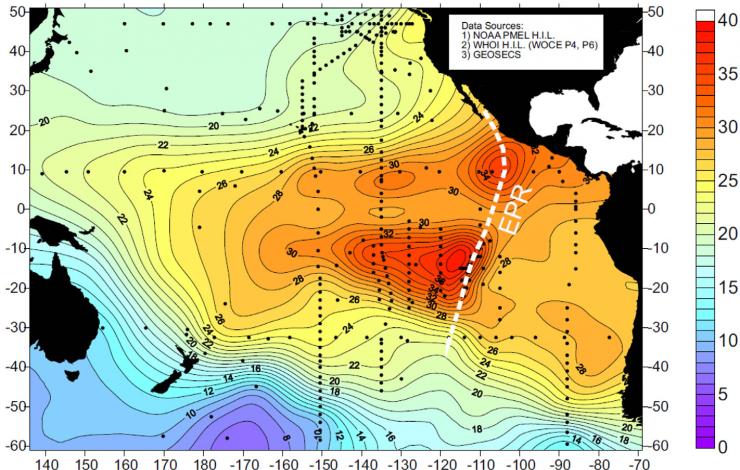Lupton, J.E., and W.J. Jenkins
Geochem. Geophys. Geosyst., 18(5), 1810–1823, doi: 10.1002/2017GC006848 (2017)
The recent GEOTRACES Eastern Pacific Zonal Transect in 2013 crossed the East Pacific Rise at 15°S following the same track as the 1987 Helios Expedition along the core of the mid-depth helium plume that spreads westward from the East Pacific Rise (EPR) axis. The fact that several stations were co-located with the earlier Helios stations has allowed a detailed comparison of the changes in the helium plume over the intervening 26 years. While the plume in many areas is unchanged, there is a marked decrease in plume intensity at longitude 120°W in the 2013 data which was not present in 1987. Recent radioisotope measurements along the plume track suggest that this decrease is due to the intrusion of a different water mass into the plume, rather than a modulation of hydrothermal input on the EPR axis. Analysis of GEOTRACES hydrographic data shows excess heat present in the plume up to 0.04°C, corresponding to a 3He/heat ratio of ∼2.5 × 10−18 mol J−1, similar to that found in mature hydrothermal vents. RAFOS floats deployed in 1987 indicate an average westward transport of ∼0.3 cm s−1 at 2500 m depth in the off-axis plume, in agreement with recent estimates of ∼0.4 cm s−1 based on “aging” of the plume from 227Ac/3He ratios.



